Connect to QuickBooks Angular directive
Simple Connect button rendering
I was attempting to answer this SO question which referenced this angular directive for rendering a "Connect to QuickBooks" button. I fired up the gulp-angular generator but couldn't get that directive to work and in the process was was able to come up with a simpler approach.
- Install the gulp-angular Yeoman generator, make a new dir, and run the generator.
- Install no additional items when prompted by the Yeoman wizard.
- Oops. The bower install failed.
- Re-run
bower install. - Test the generator doing a
gulp serve. - Let's clean up some of the scaffolding stuff. Remove the
awesomeThingsarray insrc/app/main/main.controller.js - Then remove the corresponding
ng-repeatinsrc/index.html. - Make a new file
src/app/main/directives.jsand add the following. - Then in
src/index.htmldo: - Let's check it out.
$ npm install -g generator-gulp-angular $ cd ~/github/labs $ mkdir connect-intuit-angular && cd $_ $ yo gulp-angular
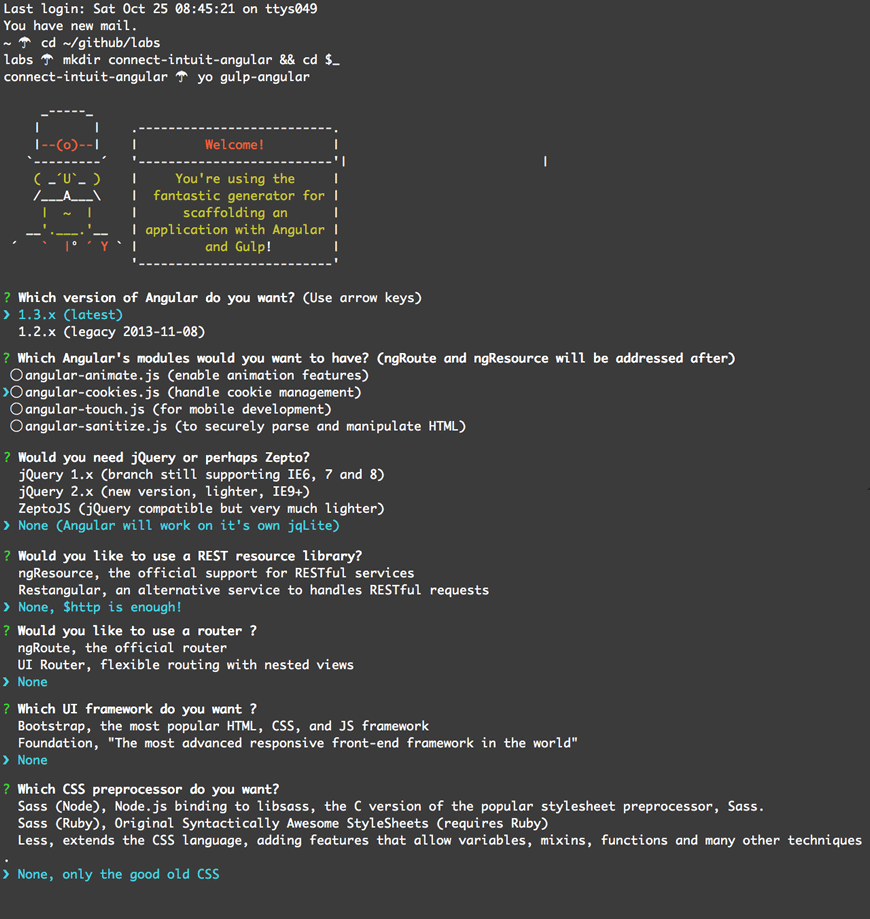

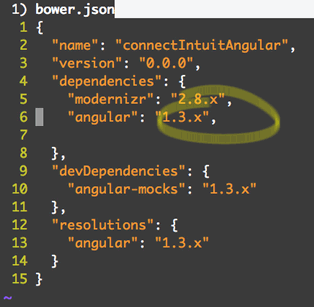
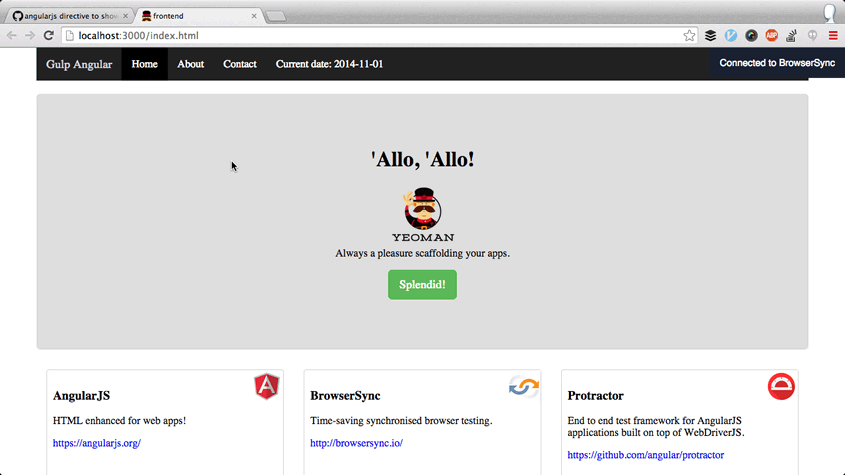
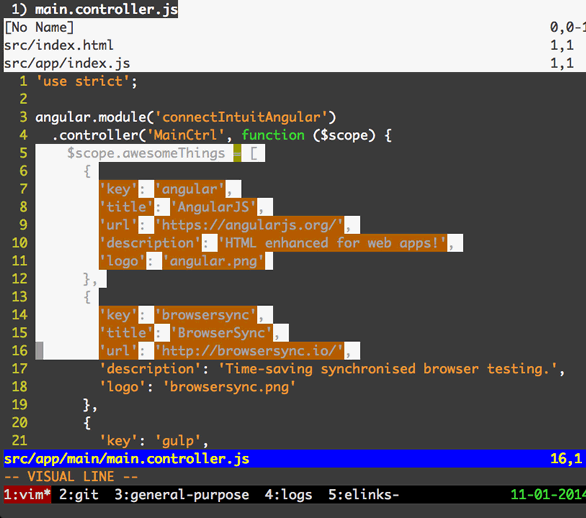
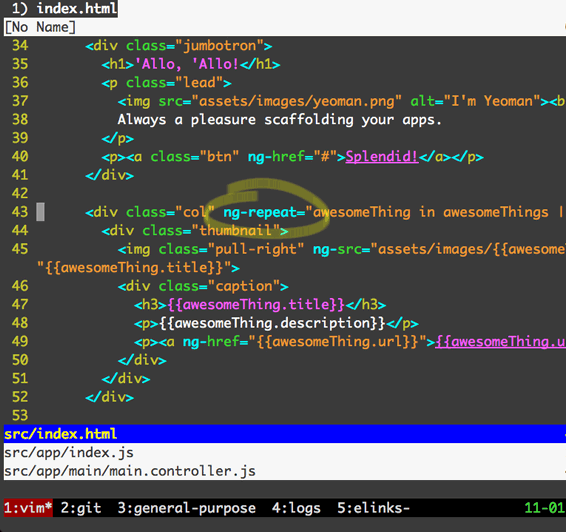
/* src/app/main/directives.js */
angular.module('connectIntuitAngular')
.directive('connectToQuickbooks', function($window){
return {
restrict: 'E', template: "<ipp:connectToIntuit></ipp:connectToIntuit>",
link: function(scope) {
var script = $window.document.createElement("script");
script.type = "text/javascript";
script.src = "//js.appcenter.intuit.com/Content/IA/intuit.ipp.anywhere.js";
script.onload = function () {
scope.$emit('intuitjs:loaded');
};
$window.document.body.appendChild(script);
scope.$on('intuitjs:loaded', function (evt) {
$window.intuit.ipp.anywhere.setup({ grantUrl: '/' });
scope.connected = true;
scope.$apply();
});
}
}
});
<!-- index.html -->
<div class="jumbotron" ng-init="connected = false">
<div class="control-group">
<div class="controls" ng-show="!connected">
Loading QuickBooks Connect button
</div>
<div class="controls" ng-show="connected">
<connect-to-quickbooks />
</div>
</div>
</div>
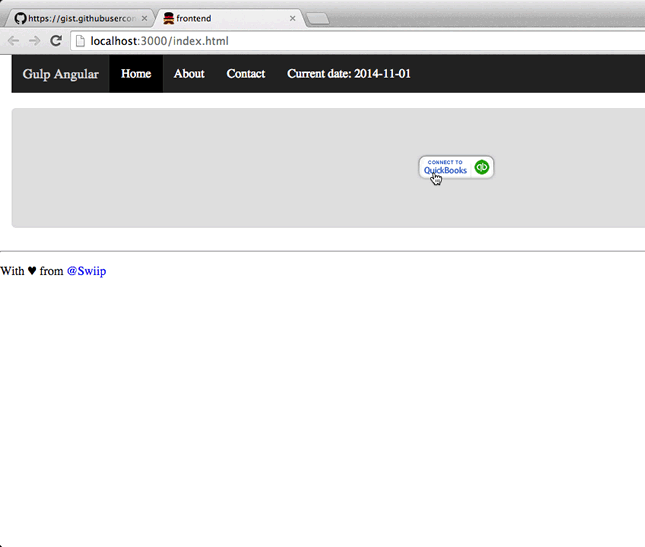
Handling external Javascript
There a few other ways to handle external Javascript dependencies in Angular but I like using the onload attribute in combination with Angular events as it is simple and easy to follow. In this refactoring I was able to save quite a few lines of code while improving read-ability.
- Pushed on 11/03/2014 by Christian
- QuickBooks Integration Consulting
